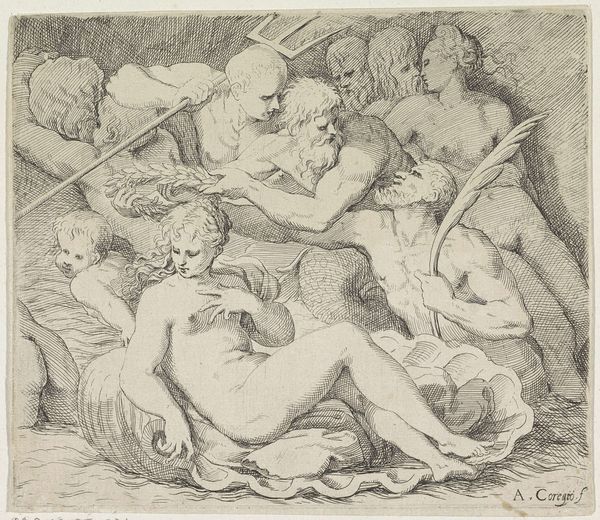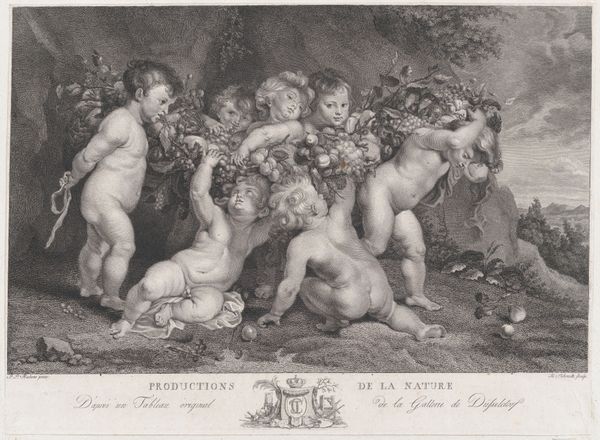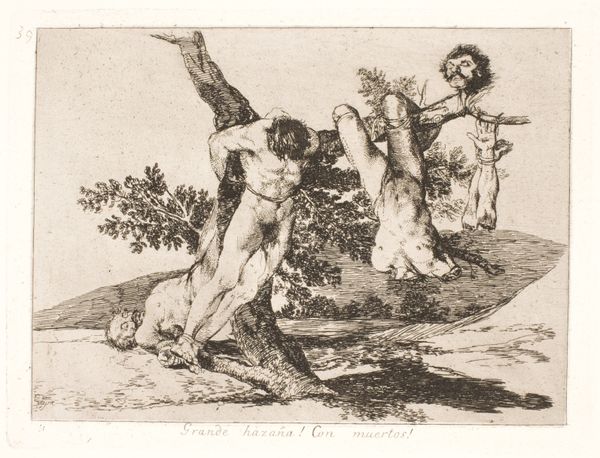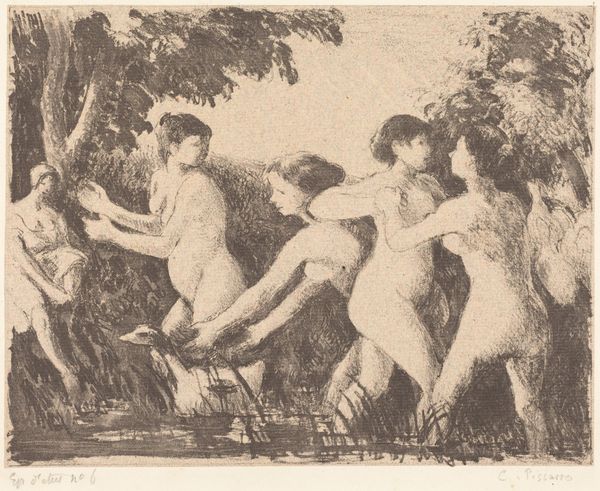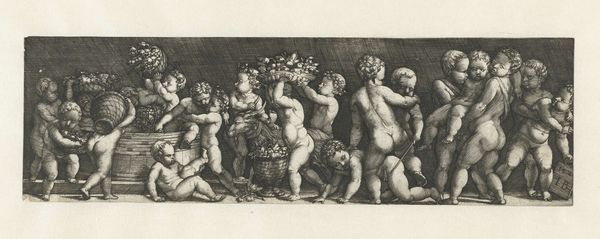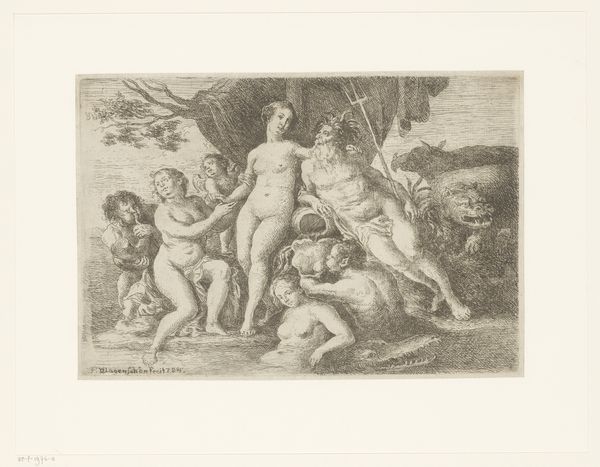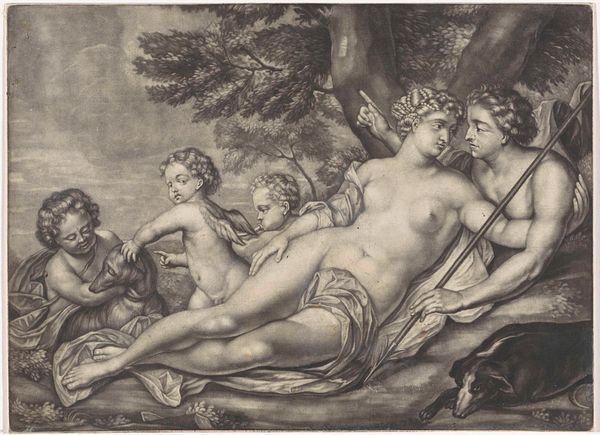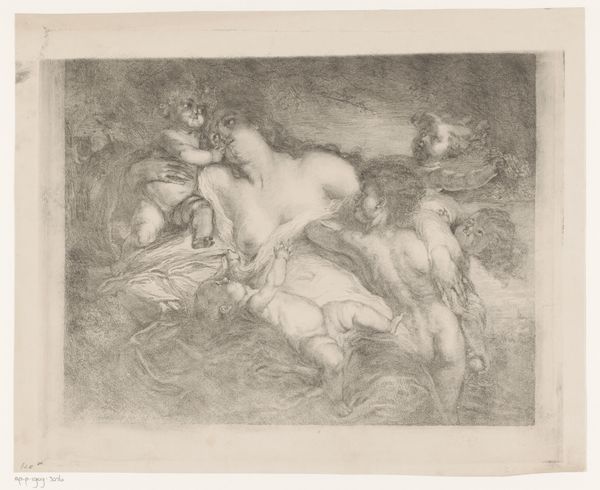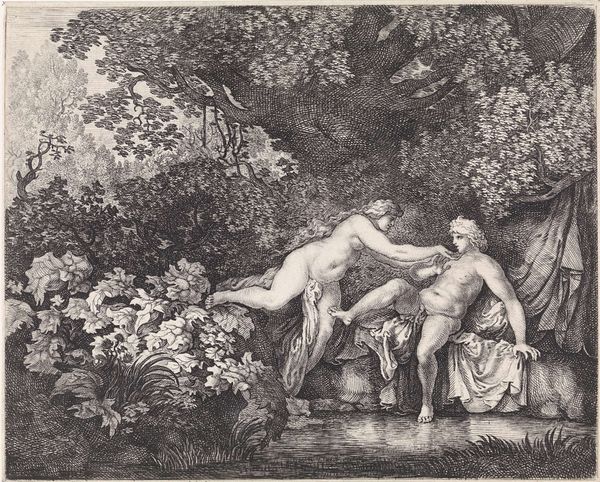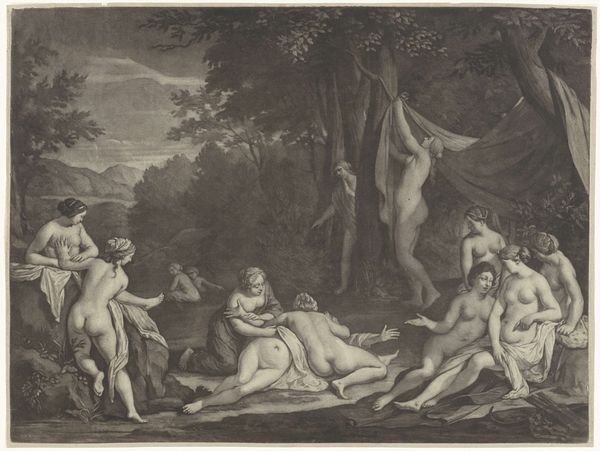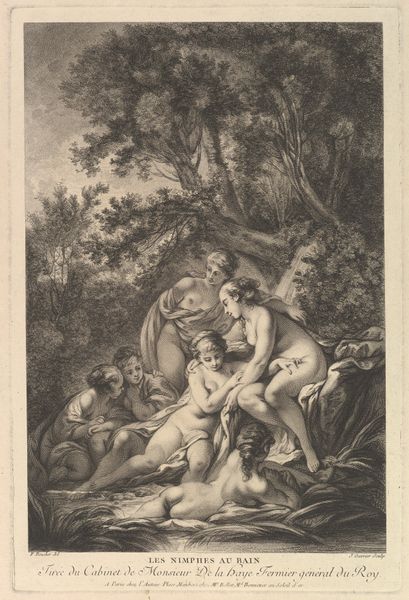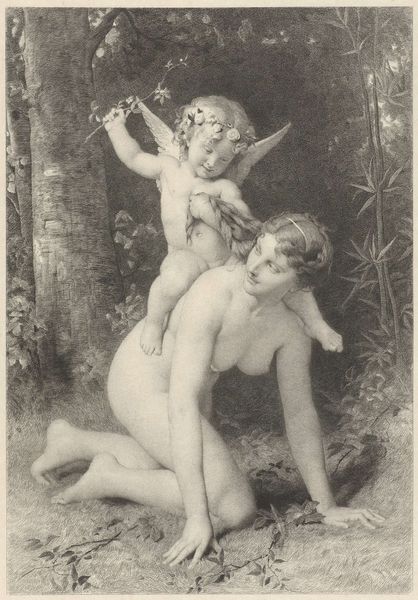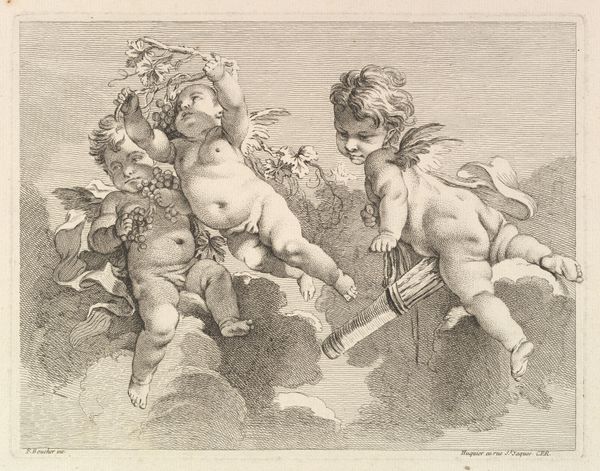
Fotoreproductie van (vermoedelijk) een prent naar een schilderij door Peter Paul Rubens, voorstellend putti met fruit c. 1870 - 1900
0:00
0:00
anonymous
Rijksmuseum
Dimensions: height 127 mm, width 205 mm
Copyright: Rijks Museum: Open Domain
Editor: Here we have what is thought to be a photographic reproduction of a print made after a painting by Peter Paul Rubens. This piece, titled "Fotoreproductie van (vermoedelijk) een prent naar een schilderij door Peter Paul Rubens, voorstellend putti met fruit," was created sometime between 1870 and 1900. The frolicking putti have a lightness to them despite the burden of all those fruits and flowers. What jumps out at you when you look at this? Curator: Ah, yes, a delightful scrum of cherubs doing heavy lifting! Isn’t it interesting how these later reproductions take on a life of their own? Here, we see Rubens filtered through photography and printmaking—layers of interpretation. I'm struck by the *absence* of Rubens' signature color. Doesn't the monochromatic palette soften those famously plump figures, almost dematerializing them into an ethereal vision? It's like witnessing a baroque dream. Do you feel it pulls back the drama and amps up the dreaminess? Editor: It certainly does, and makes me see this artwork in a completely different way, since the dynamism of colour isn’t here. Did this reproduction serve a particular purpose back then? Curator: Oh absolutely! Consider this a way to democratize art. Suddenly, folks who couldn't stroll through royal collections could bring Rubens—albeit filtered—into their homes. It's an act of making art accessible, transforming it into something almost mass-produced, wouldn't you say? A bit ironic, given Rubens' star status, no? Editor: That's fascinating, democratizing art through reproductions. I suppose it does give it a new meaning entirely. Thanks so much! Curator: My pleasure! Every viewing shifts the gaze. We change. The artwork changes. Isn't that marvelous?
Comments
No comments
Be the first to comment and join the conversation on the ultimate creative platform.
